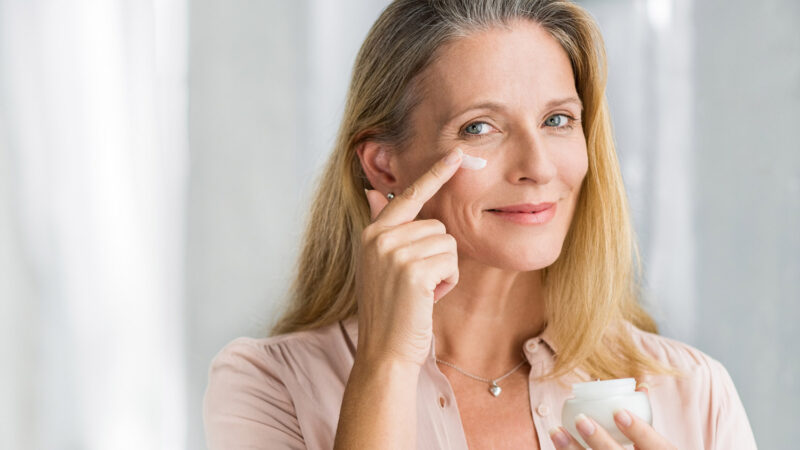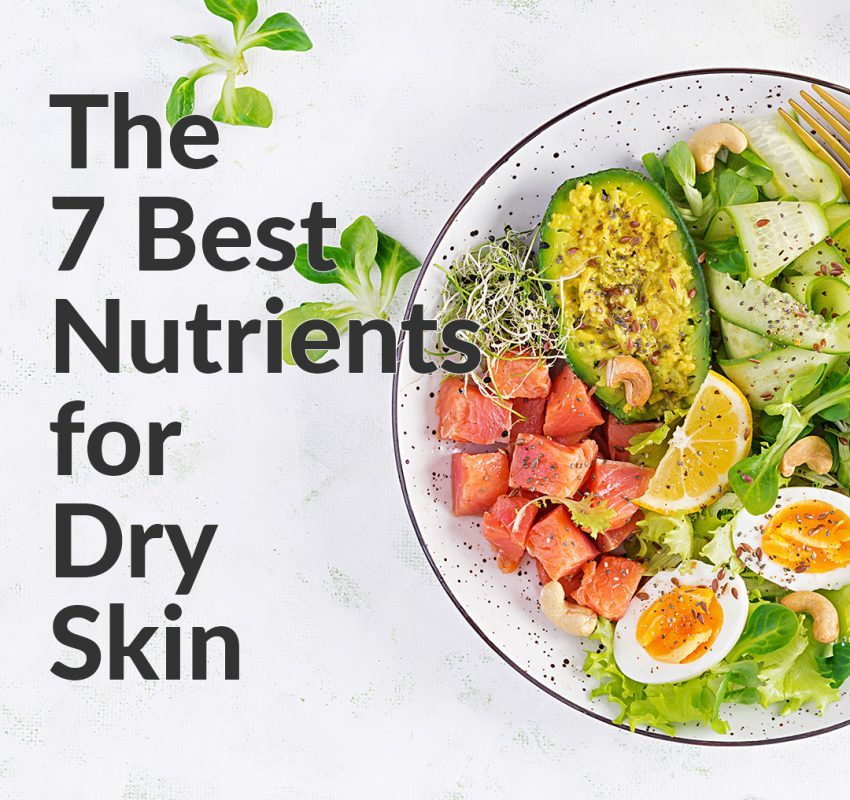The last several decades have seen an increased interest in “clean” living, and being ultra aware of what we put into our bodies via the food and drinks we consume, the air we breathe, and even the medications and supplements we take—all in an effort to limit the numbers of harmful pesticides, toxins, and chemicals we ingest.
But, what about what we put on our body? Can the various personal care and cosmetic products we slather on each and every day make their way into our bloodstream, reaching our most vulnerable organs and glands within?
The answer is a resounding yes, and the implications to your health and wellness can be downright dangerous.
Through the Skin: Truly Transdermal
Our skin is the largest organ in our body, with a surface area of nearly two square meters on an average adult. Made up of two main layers—the outer epidermis and the inner dermis—our skin acts as a permeable barrier, keeping water, moisture, and nutrients in; and toxins and harmful bacteria out. However, our exterior is not a complete barrier, and chemicals that we put on it—either intentionally (think transdermal medication) or unintentionally—can penetrate into our bloodstream and adversely affect our health.1
Transdermal absorption occurs in one of three ways: through skin cells (transcellular), around skin cells (intercellular), or directly through hair follicles, sweat glands, and sebaceous (oil) glands. A number of factors influence just how permeable your skin is at any given time, including your skin’s temperature and hydration, where it is on your body, and the duration of exposure.1
Not surprisingly, the higher the temperature, the longer the exposure, the easiest access to your bloodstream (like on your scalp, face, and underarms), and the more surface area covered, the higher the absorption rate through your skin layers and into your circulation.
Depending on what you are putting on your skin, this could be beneficial…or very detrimental.
The Downside of Absorption
If you’re relaxing in a natural hot springs renowned for its healing minerals, you want your skin to absorb as much of the beneficial compounds as it can, but for most of us, this is a rare (albeit wonderful!) special occasion.
In contrast, our daily lives are often rife with exposure to unwanted chemicals that can absorb through our skin, in everything from the water we wash up with to the personal care products we use. In fact, research shows that skin absorption can account for a whopping 64% of the daily volatile organic compounds (VOCs) we take in from tap water, such as during baths or showers!2
This means we have to take a closer look at potential chemical exposure in our daily routines. Here’s an example:
• You wake up, jump into a hot shower, and lather your hair with shampoo and conditioner.
• As you wash out your hair, the leftover product coats your entire body and you then use a different soap to clean your skin from head to toe.
• You apply shaving cream before rinsing and hopping out of the shower.
• Before you dry completely (because we all know lotions tend to absorb better on slightly wet skin), you slather lotion all over your body and let it soak in, and then swipe deodorant under your arms.
• Then, you focus on your face—cleanser, toner, moisturizer, and sometimes make-up round out your facial routine.
• You massage hair product into your scalp, then use a hot blow dryer to set your style.
• Before you head out for your mid-day walk, you apply sunscreen to your face, arms, neck, and legs.
• As the day wears on, you use hand soap several times, followed by hand moisturizer to ease dry skin issues.
• As bedtime approaches, you again wash your face, and turn in for the night with a deep-penetrating moisturizer.
Before you know it, your delicate skin has been exposed to fifteen different products, all with their own lists of (oftentimes harmful) ingredients! Not only that, but you’ve incorporated several of the factors that increase your skin’s permeability, like heat, long-term exposure, and applying products near glands and over a large surface area.
Indeed, an Environmental Working Group (EWG) survey found that the average American adult uses no fewer than nine personal care products every day, encompassing 126 different chemical ingredients—and many people use far more.3
While per use exposure may be small, this chemical soup in many personal care products can build up in our bodies, leading to a distressing variety of health issues. And, in a vicious cycle, harsh chemicals strip aways oils and moisture, making your skin more permeable and vulnerable, often leading to the use of…you guessed it, even more personal care products.
The Personal Care Dirty Dozen
The David Suzuki Foundation surveyed more than 6,200 individuals to determine their exposure to 12 of the most toxic—and most commonly used—ingredients in personal care products, and the results were astonishing. Nearly 80% of products contained at least one of the “Dirty Dozen” ingredients, and over half of the products contained multiple offenders.4
Here’s a peek at the Dirty Dozen ingredients to avoid at all costs, and how they can harm your body:
1. BHA and BHT
These preservatives are generally used in moisturizers and makeup. BHA (butylated hydroxyanisole) can interfere with hormone function and may cause cancer, and BHT (butylated hydroxytoluene) can mimic estrogen and may cause liver, thyroid, and kidney issues.
2. Coal Tar Dyes (p-phenylenediamine and colors listed as “CI” followed by a five digit number)
Used in cosmetics and hair dyes, coal tar dyes may be contaminated with heavy metals and are recognized as human carcinogens.
3. DEA (cocamide DEA and lauramide DEA)
DEA compounds are used in shampoos, moisturizers, sunscreens, and soaps to make products creamy and foamy. High doses can lead to precancerous skin changes and even liver cancer.
4. Dibutyl Phthalate (DBP)
Mostly used in nail products and as a fragrance ingredient, DBP is a suspected endocrine disruptor, can lead to genetic mutations, can impair fertility, and may cause harm to unborn children.
5. Formaldehyde-Releasing Preservatives (DMDM hydantoin, diazolidinyl urea, imidazolidinyl urea, methenamine, quaternium-15, and sodium hydroxymethylglycinate)
These preservatives, which appear in a wide variety of cosmetics and personal care products, slowly release formaldehyde, which is a known cause of cancer.
6. Parabens
The bad boys of the ingredient world, parabens are the most widely used preservative in personal care products. Because they are able to easily penetrate the skin, parabens are especially dangerous as hormone disruptors and estrogen imitators. One particular paraben, methylparaben, is associated with DNA damage and increased skin aging.
7. Parfum (a.k.a. fragrance)
More than 3,000 chemicals are used as fragrances in personal care products, but you’ll be hard pressed to figure out which ones, since companies aren’t required to list exact fragrance ingredients. These chemicals can cause everything from migraines and allergies to asthma.
8. PEG (polyethylene glycols)
Petroleum-based PEGs are often used as cream bases in cosmetics, and can be contaminated with 1,4-dioxane, a possible carcinogen.
9. Petrolatum
Frequently used as a moisture barrier in moisturizers and in hair products to promote shine, petrolatum may be contaminated with polycyclic aromatic hydrocarbons (PAHs), which can cause cancer.
10. Siloxanes (ending in -siloxane or -methicone)
These silicone-based compounds—used in personal care products to smooth, soften, and moisten—are endocrine disruptors, and may harm the reproductive system.
11. Sodium Laureth Sulfate
Common in cleaners, shampoos, and bubble bath, sodium laureth sulfate is a foaming agent that may be contaminated with 1,4-dioxane, which can cause cancer.
12. Triclosan
Triclosan is an antibacterial agent and preservative common in cosmetics, cleansers, sanitizers, and deodorants. In addition to acting as a possible endocrine disruptor, triclosan may contribute to antibiotic resistance by wiping out beneficial bacteria. In one study, nursing mothers who used personal care products containing Triclosan had higher concentrations of the chemical in their plasma and breast milk than mothers who didn’t use such products.5 In another study at the University of Michigan in Ann Arbor, researchers swabbed the noses of 90 adults and found Triclosan was present in the nasal secretions of a whopping 41% of them.6
What’s more, not only are all these chemicals associated with very real health risks, but they can do serious damage to one of your body’s most important defense systems: your skin microbiome. You see, within and on your skin lives a thriving community of beneficial bacteria that interact with your immune system, maintain your skin’s moisture levels, and fight off harmful bacteria that can make you (and your skin) sick.
The problem is that chemicals in personal care products can destroy these friendly flora, leaving your skin and your immune system open to threats.
What About Regulations?
So, where are the governmental recommendations? Can’t they protect us from dangerous ingredients? Unfortunately, the FDA doesn’t approve or review any ingredients or personal care products before they hit the shelves. This is in stark contrast to the European Union, which requires pre-market safety assessments and mandatory product registration for cosmetics.
Additionally, the EU bans more than 1,300 chemicals from cosmetics that are suspected to cause genetic mutations, cancer, reproductive harm, or birth defects—sadly, the FDA has only restricted or banned 11.6 And, according to the EWG, nearly 80% of the 12,500 chemical ingredients used in personal care products have never been evaluated for safety. Yikes!
As you can see, the Dirty Dozen are just a few of the thousands of dangerous and unhealthy chemicals present in skincare products. The EWG maintains a database of the ingredient labels of more than 60,000 personal care products and they’ve determined that one out of every five products contains ingredients linked to cancer, 80% contain ingredients with hazardous impurities, and 56% are specifically developed to deliver ingredients deep into the skin—further compounding the danger.7
This means consumers must be avid label readers, not only to look for and avoid chemicals that can directly cause health problems, but also for chemicals that can be contaminated with—or can degrade into—harmful substances.
The Valentia Difference
“First, do no harm.”
At Valentia, we believe that what you put on your body is just as important as what you put in your body, and that you shouldn’t have to wonder what’s lurking in your personal care products. That’s why we’ve set out to create the world’s cleanest skincare line, using 100% natural, organic, understandable ingredients that are meant to nourish your skin and your entire body, from the outside in.
You won’t find any of the Dirty Dozen chemicals (or anything else that’s harmful or artificial!) in our products—just honest, pure, simple, and effective ingredients straight from the earth. Join us today in cleaning up your skincare routine to give your body and health the love and protection it deserves!
References:
1. Kielhorn J, Melching-Kollmuß S Mangelsdorf I. Dermal Absorption: WHO/International Programme on Chemical Safety, Environmental Health Criteria. Geneva, Switzerland: World Health Organization; 2005. Available at: http://www.who.int/ipcs/features/2006/ehc235/en/index.html
2. Brown, H. S., Bishop, D. R., & Rowan, C. A. (1984). The role of skin absorption as a route of exposure for volatile organic compounds (VOCs) in drinking water. American Journal of Public Health,74(5), 479-484. doi:10.2105/ajph.74.5.479
3. Environmental Working Group (EWG). (2004). Skin Deep: A Safety Assessment of Ingredients in Personal Care Products. Retrieved from http://www.ewg.org/skindeep/2004/06/15/exposures-add-up-survey-results/#.Wba5a9OGOb8.
4. David Suzuki Foundation. (2010). What’s Inside? That Counts. A Survey of Toxic Ingredients in our Cosmetics. Retrieved from http://www.davidsuzuki.org/publications/downloads/2010/DSF-report-Whats-inside-that-counts.pdf
5. Allmyr, M., Adolfsson-Erici, M., Mclachlan, M. S., & Sandborgh-Englund, G. (2006). Triclosan in plasma and milk from Swedish nursing mothers and their exposure via personal care products. Science of The Total Environment,372(1), 87-93. doi:10.1016/j.scitotenv.2006.08.007
6. Syed, A. K., Ghosh, S., Love, N. G., & Boles, B. R. (2014). Triclosan Promotes Staphylococcus aureus Nasal Colonization. MBio,5(2). doi:10.1128/mbio.01015-13
7. Prohibited or Restricted Ingredients. (2015, January 26). Retrieved from https://www.fda.gov/cosmetics/guidanceregulation/lawsregulations/ucm127406.htm#prohibited
8. Houlihan, J. Why This Matters—Cosmetics and Your Health. Retrieved from http://www.ewg.org/skindeep/why-this-matters-cosmetics-and-your-health/#.Wbf539OGOb8









2 thoughts on “How What You Put on Your Skin Affects Your Health”
It’s actually a great and useful piece of information. I’m glad that you simply shared this helpful info
with us. Please stay us informed like this.
Thank you for sharing.
No matter if some one searches for his essential thing, thus he/she desires to be available that in detail, so that thing is maintained over here.